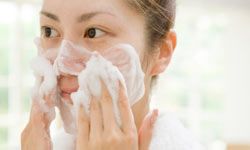Soap has long been the cleaning substance of choice, but it doesn't always treat skin well. Strong soaps can be especially harsh on sensitive skin. But soapless skin cleansers -- sometimes called synthetic detergents or syndets -- could be just what your sensitive skin needs.
You wash your face and body to remove dirt, oil and bacteria from your skin. But while soap does all of these things, harsh formulas can also dry and irritate skin. Soapless skin cleansers, on the other hand, are different from soaps: They contain less acid and more moisturizing ingredients, which enables them to gently remove dirt and oil from skin [source: Draelos].
Advertisement
Approximately 40 to 50 percent of the population exhibits symptoms of sensitive skin, and more women than men deal with this pesky problem [source: Glaser]. You may have sensitive skin if you easily break out in rashes or experience blotchy, itchy or stinging skin in response to weather or cosmetics [source: Zamonsky]. People with sensitive skin may be prone to skin conditions such as rosacea, eczema and acne [source: WebMD]. Using a harsh soap can make these conditions worse, which is why doctors recommend a mild cleanser.
Soapless cleansers essentially do the same job as soap -- but without the harsh ingredients some traditional bar soap may contain. Keep reading to learn about the science behind these cleansers.
Advertisement


